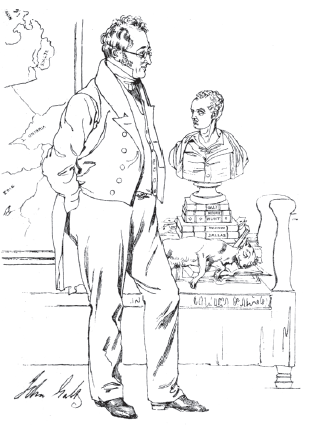The Canada Company, John Galt, and the Founding of Guelph
The Canada Company was chartered in 1825 as a land and colonization company based in London, England. In 1826, the company purchased from the British Crown about 2.5 million acres of land on the shores of Lake Huron in Upper Canada (modern-day Ontario). The Crown had earlier acquired this land from the Mississaugas of the Credit First Nation through the Between the Lakes Purchase No. 3 Treaty (1792). It is the ancestral homeland of the Anishinaabek Peoples.
Novelist and colonial promoter John Galt (1779–1839) was the first superintendent of the Canada Company. Galt arrived in Upper Canada in 1826 and founded the city of Guelph April 23, 1827.
Guelph was a planned town, with roads and facilities laid out and built according to a plan. Galt adopted the concept of a “planned town” in advance of general settlement in order to stimulate sales of agricultural land. Galt’s original layout, with streets radiating from a single focal point, is still visible in Guelph’s downtown core. Galt named Guelph after Britain’s royal family, the Hanoverians, who were descended from the Guelfs. Guelph was first incorporated as a village in 1851, and then as a town in 1856.
Due to conflict with the Canada Company directors, Galt was recalled to Britain in 1829. The Canada Company remained in operation until its last parcel of land was sold in the 1950s.
Image: John Galt, The Author of a “Life of Byron,” 1837. Original engraving by Daniel Maclise, from the series A Gallery of Illustrious Literary Characters, 1830–1838. First published in Fraser’s Magazine for Town and Country in London




